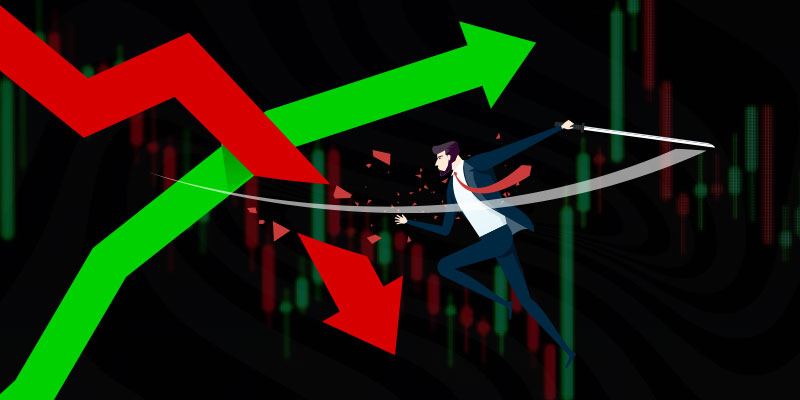Trading is tremendously becoming popular, and it is one of the ways to earn money. It can either be the primary source of income or a secondary source to earn. There are specific strategies which must be followed to become a successful trader with less loss. A strategy is an essential plan in trading, and the one which suits for a particular person may not suit the other. So it is good to have a separate strategy and follow each at a time because swapping to multiple ones cannot help in trading. The multiple ones include trade entry, stop loss, trade exit, and many more. The stop loss is of two types, wide and tight. Here we are going to see both the wide and tight stop losses and how it is beneficial in the trade.
Stop loss
Stop loss is nothing but a level of the price we set in trading to stop the loss and limit risk. When the price hits a particular amount, you can place an order with a broker to buy or sell and protect a specific portion of existing profits. There are two types of stop-loss, tight stop loss, and wider stop loss. You can set either wide or tight stop loss because each has its benefits. The stop loss you set in trading can be modified at any time during the trade. Let us see which kind of stop loss is best and which stop loss a trader must choose to set in trading.
Stop loss is a tool used for short term investment, and is helpful for small time investors. Placing the stop loss value at different levels can increase or decrease the amount of loss acquired. The only way to ascertain this is to take a historical chart data to study and analyze all these combinations in a demo environment before actually putting the real money at stake. It entirely depends on individuals trading practices and the methodology adopted to set the stop-loss very tight or at a safe level in a fluctuating market. Although there are some advantages of keeping the stop-loss very stingy like large size contract trading, increased profit margin, a higher risk-reward ratio, and of course minimized loss. It is likely to go the other way most of the time because the tight stop-loss can get triggered very often in a highly volatile market. Hence professional traders that trade for a long time prefer to set an extended stop-loss. The study on the historical data of weekly and monthly charts ascertains the value set for stop-loss.
Analyzing the prospect of setting the stop-loss for an extended period can yield much better results as compared to instant decisions. So having a constant study of the market trend on a weekly or monthly basis can enhance your perspective towards market behavior. In the long run, this may help you to become a better trader who can take appropriate decisions in using the available options like stop-loss to avoid losses.
The decisions you take regarding the stop losses may tell you the result whether you get to succeed or lose the trade. There is no proof that only a wide stop loss or tight stop loss is beneficial, sometimes wide stop loss gives profit, and sometimes tight stop loss does. People say that it is more important to have a perfect entry to succeed; some say that it is vital to have a perfect exit plan or stop loss to succeed. However, this depends on how you move the trade. So choose wisely according to your trading style.
To know which stop-loss works better, work on different stop losses, and see the results so that it might be easy for you to fix a stop loss for success. You can test as many stop losses as you wish, it is safe to know each stop loss, and you can proceed accordingly in the market.
Conclusion
Stop loss can save you during the trade, and at times, people may face loss even though the stop-loss is correct. This fluctuation is because of the trading strategies which might be set inappropriately or might not have followed periodically. So setting strategies and stop losses correctly according to your trading style may help you in trading.




